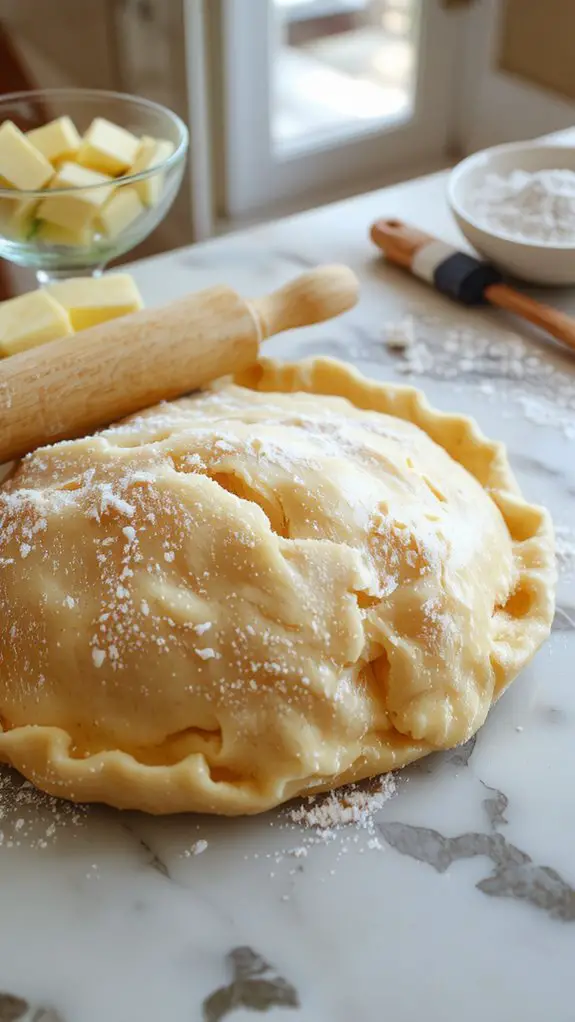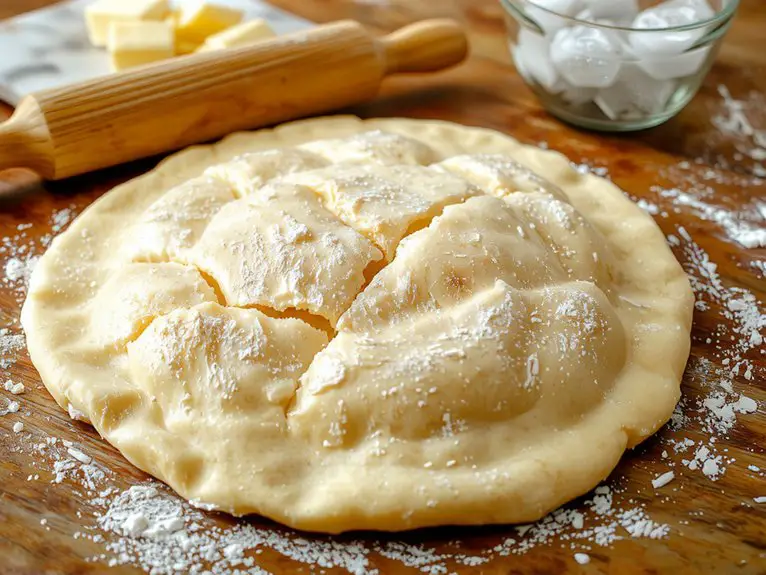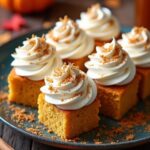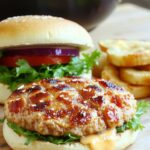I’ve tried countless pie crust recipes, but the best one strikes a balance between simplicity and technique. It’s all about cold butter, minimal handling, and just enough water to bring the dough together. The result is a crust that’s tender, flaky, and golden every time. If you’ve struggled with tough or soggy crusts, this method might change your pie game—but there’s a trick to getting it just right.
Recipe
Let me be totally honest with you—this homemade pie crust is the real deal, and once you try it, you’ll never go back to store-bought. It’s flaky, buttery, and just the right amount of tender, with a rich flavor that elevates any filling you choose. The secret? Keeping your ingredients cold and handling the dough with a light touch—trust me, it makes all the difference.
I’ve made this crust more times than I can count, and it’s always been a showstopper, whether it’s cradling a sweet apple filling or a savory quiche. The way it shatters into delicate layers with every bite is pure magic.
Don’t let the idea of homemade crust intimidate you—this recipe is straightforward, forgiving, and totally worth the effort. Your pies will thank you.
Ingredients
The secret to a perfect pie crust lies in the ingredients you use. Choose wisely, and you’ll end up with a flaky, tender crust that’s worth bragging about. Here’s what you’ll need, plus some chef-approved tips to make your crust shine:
- All-purpose flour (2 ½ cups): The backbone of your crust. Stick to all-purpose for the right balance of tenderness and structure.
- Unsalted butter (1 cup, cold and cubed): Cold butter is non-negotiable—it creates those dreamy, flaky layers. Don’t substitute with margarine; it just won’t cut it.
- Granulated sugar (1 tbsp): Adds a hint of sweetness. Skip it if you’re making a savory pie.
- Salt (1 tsp): Enhances the flavor. Use fine sea salt for even distribution.
- Ice water (6-8 tbsp): Keeps the dough cold and binds it together. Add it gradually until the dough just comes together.
Pro Tip: If you’re feeling fancy, swap half the butter with shortening for an extra-tender crust. Or, freeze your butter beforehand and grate it into the flour for ultimate flakiness.
How to Make the Best Perfect Flaky Pie Crust

– Prep the ingredients: Measure out all your ingredients before starting. Use cold butter and ice water to guarantee the crust stays flaky. Cutting the butter into small cubes beforehand makes it easier to incorporate into the flour.
Pro Tip: Keep your butter and water in the fridge until the very last moment to maintain their cold temperature.
– Mix the dry ingredients: In a large bowl, whisk together the flour, sugar, and salt until evenly combined. This guarantees your crust has a consistent texture and flavor.
Watch-Out Warning: Avoid over-whisking—just mix until everything is well-distributed.
– Cut in the butter: Add the cold butter cubes to the flour mixture. Use a pastry cutter, fork, or your fingertips to cut the butter into the flour until the mixture resembles coarse crumbs with pea-sized butter pieces.
Why It Matters: These butter pieces create steam as they bake, which helps the crust become flaky.
Visual Cue: Stop when the mixture looks like sandy gravel with small lumps of butter.
– Add ice water: Gradually sprinkle ice water over the flour-butter mixture, 1 tablespoon at a time. Gently mix with a fork or your hands until the dough just comes together.
Pro Tip: Be cautious with the water—too much will make the dough sticky, and too little will make it crumbly.
Visual Cue: The dough should hold together when pressed but not feel wet.
– Form the dough: Gather the dough into a ball, then divide it into two equal portions. Flatten each portion into a disk, wrap in plastic wrap, and refrigerate for at least 1 hour.
Why It Matters: Chilling the dough solidifies the butter, preventing it from melting too quickly during baking.
Time-Saving Trick: If you’re in a hurry, you can chill the dough for 30 minutes, but an hour is ideal.
– Roll out the dough: On a lightly floured surface, roll out one disk of dough into a circle about 1/8-inch thick, rotating and flouring the dough occasionally to prevent sticking.
Pro Tip: Roll from the center outward for an even thickness.
Watch-Out Warning: Don’t roll the dough too thin, or it may tear or become brittle.
– Transfer to the pie plate: Carefully transfer the rolled-out dough to your pie plate by gently folding it in half or rolling it onto your rolling pin. Press it into the plate without stretching the dough.
Why It Matters: Stretching the dough can cause it to shrink during baking.
Visual Cue: The dough should fit snugly into the plate with a slight overhang.
– Trim and crimp the edges: Trim the excess dough, leaving about a 1-inch overhang. Fold the overhang under itself to create a thicker edge, then crimp with your fingers or a fork.
Pro Tip: For extra flair, try a decorative crimping technique like fluting or braiding.
Watch-Out Warning: Don’t crimp too tightly, or the edges may crack.
– Chill before baking: Place the prepared crust in the refrigerator for 15-30 minutes before filling and baking. This ensures the butter stays cold, resulting in a flaky texture.
Flexibility: If you’re making a no-bake pie, you can skip this step and proceed with filling.
Following these steps will help you achieve a perfect, flaky pie crust every time. Happy baking!
Nutrition
Nutrition facts per serving will vary based on the ingredients used. Below is a general estimate for a standard homemade pie crust.
| Nutrient | Amount per serving |
|---|---|
| Calories | 130 |
| Total Fat | 8g |
| Saturated Fat | 5g |
| Cholesterol | 20mg |
| Sodium | 150mg |
| Total Carbohydrate | 13g |
| Dietary Fiber | 0g |
| Sugars | 0g |
| Protein | 2g |
Chef Tips
I’ve found that a perfectly flaky pie crust comes down to a few simple tricks.
Keep your butter and water ice-cold to prevent the dough from warming too quickly.
Work quickly to avoid overhandling, which can toughen the crust.
Use a light touch when rolling, and don’t skip the chilling step—it helps relax the gluten and keeps the layers distinct.
Finally, a little vinegar or vodka can enhance tenderness.






